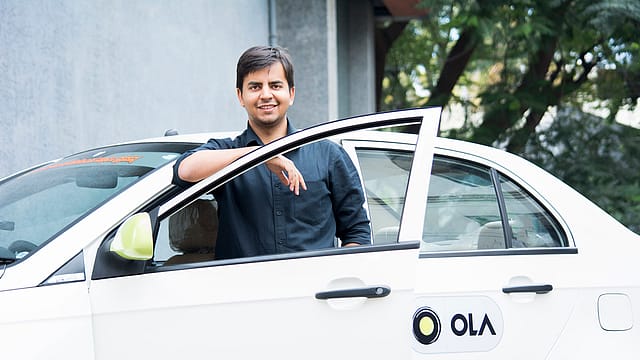Ola to build 1 lakh two-wheeler charging points
ADVERTISEMENT

Bhavish Agarwal, the chairman and group CEO of ride-hailing firm Ola, on Thursday announced that it’s building a “hypercharger network,” which is being touted as one of the largest and densest in the world. The charging ecosystem for two-wheelers, which will only be open to Ola’s customers, will be spread over 400 cities and will have more than 1 lakh charging points—out of which 5,000 will be launched this year itself in 100 Indian cities. This is more than double the existing charging infrastructure in the country. There are around 1,300 charging stations till date.
Ola’s chargers will be able to charge a scooter to 50% in just 18 minutes, which is good enough for a range of 75 km. These high-tech chargers will be deployed in destination centres such as malls, IT parks, office complexes, cafes, etc. as well as across city centres. Agarwal pointed out that this is in tandem with the company’s plans to launch its first electric scooter in June this year. “We will expand our changing network as and when we expand our sales network in different cities. The demand will grow only if we control both ends of the ecosystem—the charging as well as vehicle production,” Agarwal told reporters.
January 2026
Netflix, which has been in India for a decade, has successfully struck a balance between high-class premium content and pricing that attracts a range of customers. Find out how the U.S. streaming giant evolved in India, plus an exclusive interview with CEO Ted Sarandos. Also read about the Best Investments for 2026, and how rising growth and easing inflation will come in handy for finance minister Nirmala Sitharaman as she prepares Budget 2026.
The Bengaluru-based company plans to invest $2 billion in the next five years on building its infrastructure.
“Electric is the future of mobility and we are reimagining the entire user experience of owning an electric vehicle. Our plans to build a comprehensive charging network is a key piece of this. By creating the world’s largest and densest two-wheeler charging network, we will dramatically accelerate the customer adoption of electric vehicles and rapidly move the industry to electric,” Agarwal said.
According to the latest figures by the Society of Manufacturers of Electric Vehicle (SMEV), 143,837 units of electric two-wheelers were sold in FY21—registering a fall of 6% as against 152,000 units in the FY20. “We were anticipating good growth before the start of FY21, but sales remained stagnant due to various reasons. A good thing that has happened is that people started moving towards advanced batteries i.e. lithium. The city speed and high-speed category in the two-wheeler segment has witnessed growth. Timely intervention by the government in the form of policy change is required to fuel the growth and achieve the target by the end of FY22,” says Sohinder Gill, director general, SMEV. As per NITI Aayog's target, 70% of all commercial cars, 30% of private cars, 40% of buses, and 80% of two-wheeler (2W) and three-wheeler (3W) sales in 2030 would be electric.
Moreover, according to think tank Council on Energy, Environment and Water (CEEW), to meet India's ambitious targets, an estimated cumulative investment of over $180 billion (about ₹12,50,000 crore) is needed in vehicle production and charging infrastructure.
Meanwhile, the second wave of the Covid-19 pandemic is impacting vehicle manufacturers across the country and localised shut-downs in many states may impact demand, too. HeroMotoCorp, on Wednesday, became the first company to temporarily shut its manufacturing operations. “Each plant and GPC (global parts centre) will remain shut for four days, in a staggered manner between April 22 and May 1 basis the local scenario,” the company said in a statement.
While other vehicle manufacturers are also expected to follow suit, Ola said that their launches are “on track”. “Many companies are following supply side challenges. Even we do... but because we control a lot of manufacturing like motors, batteries, and other parts, we’re able to manage supply-side constraints. When it comes to the demand, EV penetration has drastically gone up globally during the first wave. I think we will thrive in this one as well,” Agarwal said.
(To read more about Ola's plans about electric two-wheelers, grab the April issue of Fortune India).
